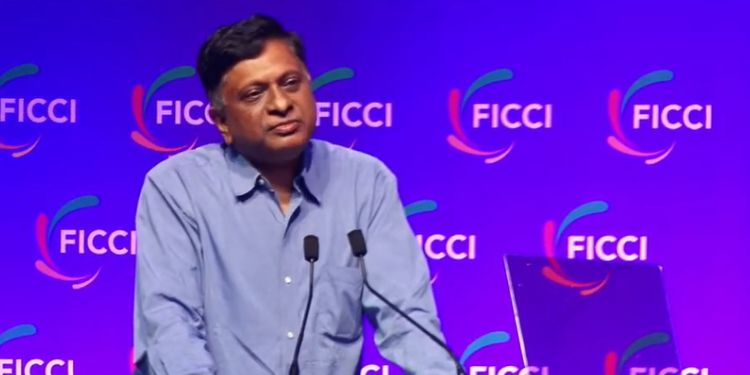“Today media and entertainment industry in India is about $23 billion when the GDP of the country is about $3.6 trillion,” said Apurva Chandra, Secretary, Minister of Information & Broadcasting, Govt. of India, while delivering the inaugural address at FICCI Frames Fast Track 2022 in Mumbai on 27 September.
Chandra said that the way India was growing, it will be a $10 Trillion economy in the next 10 years.
“The media and entertainment industry should target to grow to more than $100 billion by 2030,” he said.
He affirmed that the Information & Broadcasting ministry are facilitators and partners to M&E industry and will do whatever it takes to support the industry and make it as big as possible.
He continued, “During the Covid period, the viewing habits of people have changed to some extent. But, on September 23, 2022, when World Cinema Day was celebrated and ticket prices were brought down to Rs 75, all the shows including morning shows in the cinema theatres were full. This shows that craving for entertainment is alive and people are willing to go to theatres as long as the price points are right and they can afford it.”
Chandra said that the industry needs to work along with the public on bringing them back to cinema theatres.
Foreign Investments
On the changes brought in by the I&B Ministry in the M&E industry, Chandra said, “National Film Development Corporation headquartered in Mumbai is going to be the cinematic arm of the I&B ministry. The four film units namely, the erstwhile Film Division, the National Film Archive, the Children’s Film Society of India and the Directorate of Film Festivals will be merged to NFDC. With this we want to revamp the film facilitation office. We have proposed to hand over operations to Invest India (national investment promotion and facilitation agency that helps investors looking for investment opportunities and options in India).”
This is done with an objective to attract foreign investments into the M&E industry, he noted.
Chandra added, “The I&B Ministry along with NFDC is going to partner with Invest India to reach out to foreign filmmakers and foreign countries to come to India to shoot films and collaborate with our country. Today, we have 15 collaboration agreements with 15 countries and would like to expand that.”
He continued, “At the Cannes Film Festival, we announced the Incentive Scheme for Audio-Visual Co-production and Incentive Scheme for Shooting of Foreign Films in India. With incentives provided by states as well, all this adds on to make the package viable and attractive for filmmakers.”
Amendments to Cinematograph Act
On the proposed amendments to the Cinematograph Act, Chandra said, “All stakeholders present supported proposed amendments for introduction of anti-piracy provisions and age classification with UA category. With the support of the film industry, we hope to table the amended Bill in the winter session of the parliament.”
“I was informed that over the past five to six years the number of theatres in India is on a declining phase. While the number of theatres was at 12,000 a few years back, now it’s down to 8,000. While China has increased the number of theatres from 10,000 to 60,000-70,000, that’s the reason why some of the Indian films are doing well in China. Which is a trend we need to reverse,” Chandra said.
Chandra said that the ministry will assign the Film Facilitation office to work with Invest India and the national single portal for permission.
Changing Viewership Patterns
The speaker also touched upon changing viewing patterns of Indians.
“There is a recent shift from linear television to OTT, and from cinema theatres to OTT. Over the past two years, content is getting produced and the pase of content production has relatively increased,” he added.
On the Media & Entertainment Skill Council, he noted, “Media & Entertainment Skills Council has a big role to play in this, since skilling is the most important part in creating more jobs,” Chandra said.
Data Drive
“In India data is very cheap. In Dubai the cost of 1GB data is Rs 1000. We are fortunate to consume content on a daily basis because of that, which provides the M&E industry huge opportunity. With the launch of 5G there is another opportunity of direct-to-mobile broadcast. Prasar Bharati, in collaboration with IIT Kanpur, has come up with a proof-of-concept, where more than 200 channels can be watched and high-quality films can be watched on mobile phones, without consuming any data, using direct-to-mobile broadcast. This will become a reality in the next two to three years,” Chandra said.
Chandra said that the Animation, Visual Effects, Gaming and Comics (AVGC) Promotion Task Force constituted by the Ministry of I&B will submit its report within the next 15 days.
“AVGC is going to be the future of the country. The best of Hollywood films are now getting created in Bengaluru and other places. AVGC is the next revolution like the IT revolution 20 years back,” he concluded.

















